Get PeakVisor App
Sign In
Search by GPS coordinates
- Latitude
- ° ' ''
- Longitude
- ° ' ''
- Units of Length

Yes
Cancel
Share ×

Scan the QR code and open PeakVisor on your phone
❤ Wishlist ×
Choose
Delete
Located in the middle of the autonomous community of Andalusia in southern Spain, Parque Natural Sierras Subbéticas (English: Sierras Subbéticas Natural Park) is a collection of 8 named peaks, the highest and most prominent of which is La Tiñosa (1,561m/5,121ft). The park is situated inside the provinces of Córdoba (English: Cordova) and is close to other major parks, including Parque Natural Sierra de Sierra Mágina, Parque Nacional de Sierra Nevada, and Parque Natural Sierra de Tejeda, Almijara y Alhama.

Sierras Subbéticas Natural Park contains a handful of parallel valleys and mountains that sit within its 320.6 sq. kilometer (123.8 sq. mi) area. The mountains within the park are part of the greater Andalucian Ranges, which cover much of southern Spain, including the communities of Extremadura, Castille-La Mancha, and Murcia.
Although there are only 8 named peaks within the small area of Sierras Subbéticas Natural Park, one of the main attractions to the region is its unique geology. The park includes a lot of what’s known as karst topography. In a landscape dominated by karst topography, you often have very rocky ground with a large concentration of soluble rocks.
These rocks, which include limestone, gypsum, and dolomite, weather and erode quickly, which results in an intricate network of caves, sinkholes, and underground drainage systems. In the park, you can even visit the Cueva de Los Murciélagos (Cave of the Bats) if you want to see one of the largest and longest inhabited caves in Córdoba province. Additionally, due to the solubility of the bedrock, landscapes with a karst topography often have underground rivers and few surface lakes or streams.
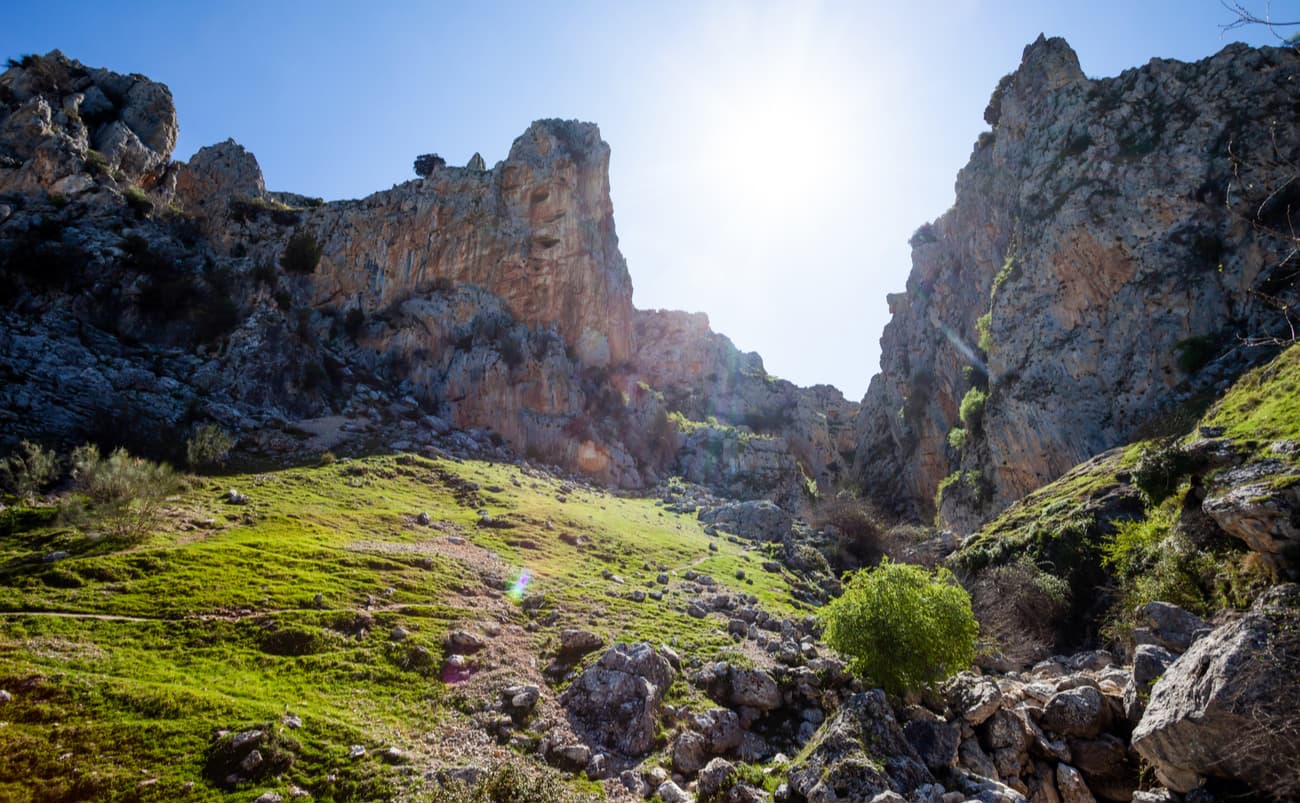
That doesn’t mean that Sierras Subbéticas Natural Park is a barren wasteland, though. In fact, the park is full of natural springs and is home to a few very deep canyons. These days, much of the landscape is covered by groves of olive trees, which are essential to the region’s status as a world capital for olive oil production.
In addition to unique geology and beautiful olive tree groves, Sierras Subbétiticas natural park is home to one of the largest colonies of breeding griffon vultures in all of Spain. The park also features about 70 other bird species, including short-toed and Bonelli’s eagles, as well as a fantastic diversity of wildflowers in the spring and summer months.
While Sierras Subbéticas has enough birdlife to keep ornithologists entertained, others can also keep a lookout for the region’s population of wild cats, badgers, wild boars, and the very rare Millers’ water shrew.
Even though Sierras Subbéticas is a natural park, it also contains seventeen towns and villages within its borders. Interestingly, the villages and towns within the park are home to some superb relics, including the historic San Juan Bautista church and ruins of Moorish castles. One of the towns in the park, Rute, is particularly famous for its production of anise liqueur, as well as the nativity scene built out of chocolate that’s on display each year during the festive season.
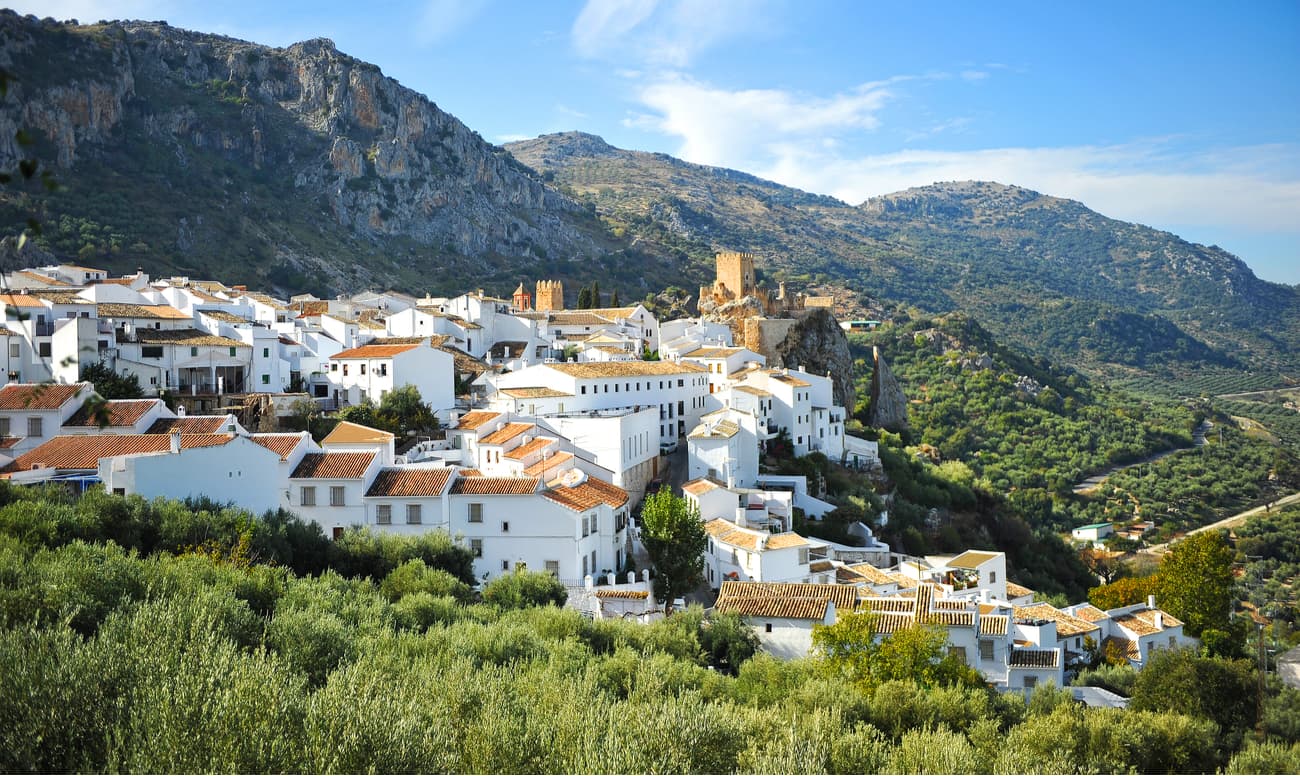
Whether the landscape, the history, or the culture draws you to Sierras Subbéticas Natural Park, you’ll certainly find endless fun and adventures within its borders.
Here are some of the more popular hiking areas in Sierras Subbéticas Natural Park:
This trail is a 16.3km (10.1 mi) loop near Priego de Córdoba. The trail starts at the Vichira farmhouse and takes you up past the Barranco de las Labores ravine. From there, the hike continues onward and you have a chance to see some Moorish ruins along the way. Eventually, you descend down into a nice forest of gall and holm oaks before returning to your starting point.
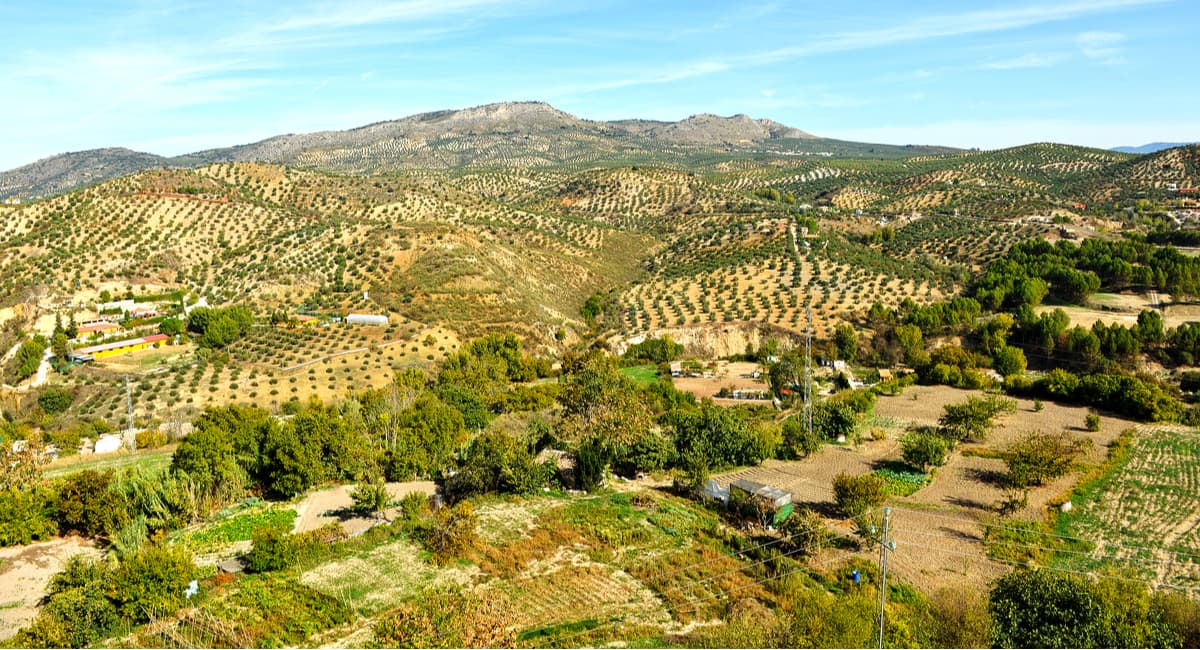
This walk follows the path of an old railway line that travels around the northern and westernmost edges of the park. From the path, you can get a great view of the Sierras Subbéticas mountains as you walk from the town of Zuheros to the villages of Luque and Cabra.
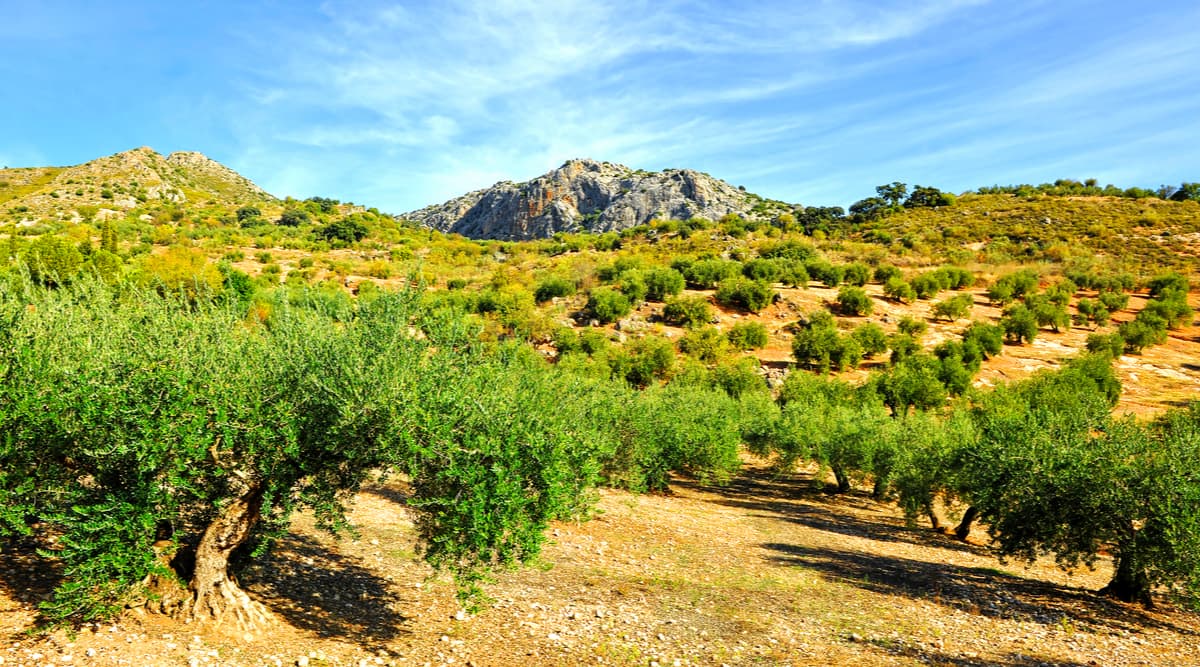
This iconic walking route covers just 5km (3.1 mi) and starts in the village of Zuheros. After you leave town, you walk on a bridge over Bailón River and deep into Sierras Subbéticas Natural Park. Along the way, you have a chance to see some typical Mediterranean flora and fauna before you return back to town.
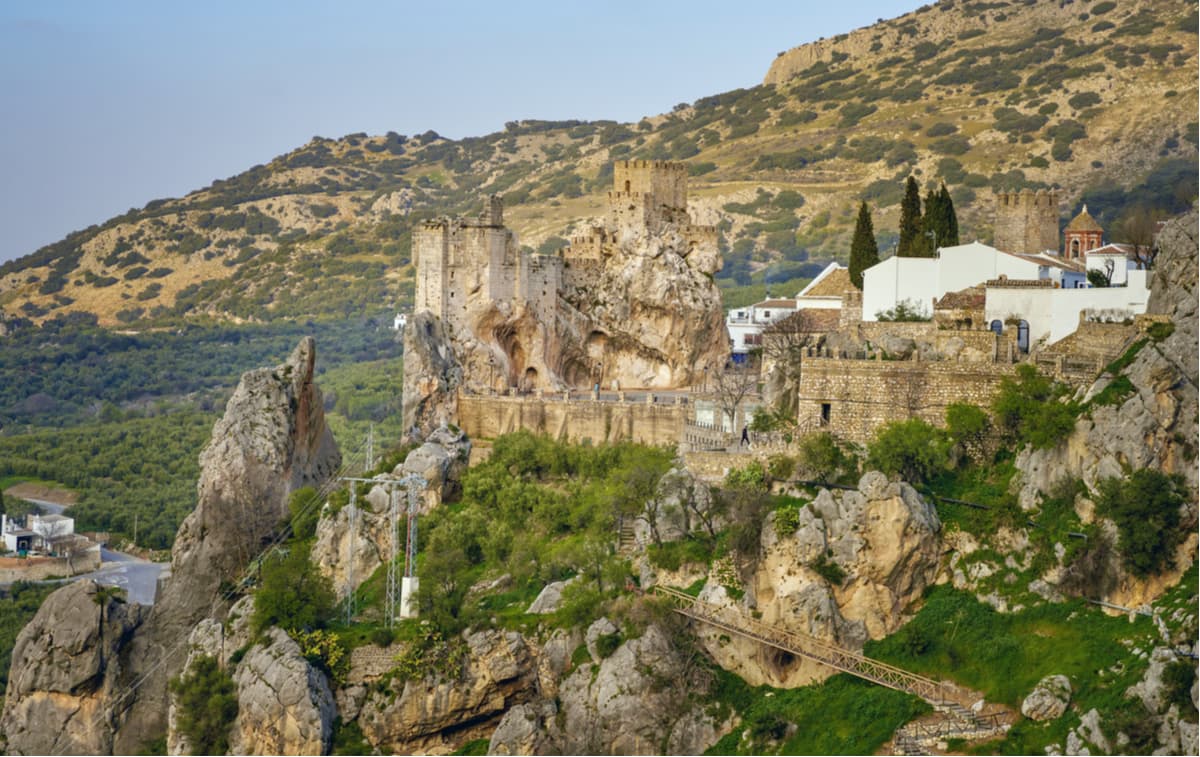
There are quite a few small towns inside Sierras Subbéticas Natural Park. But, getting to these towns can be quite difficult if you’re traveling from outside Spain. So, here are some of the major cities nearby where you can stop on your way to the park:
Situated to the north of Sierras Subbéticas Natural Park, Córdoba is the capital city of Córdoba province. The city is home to over 325,000 people and is known for having the highest average summer temperatures in all of Spain and Europe, with daily highs generally around 37ºC (99ºF).
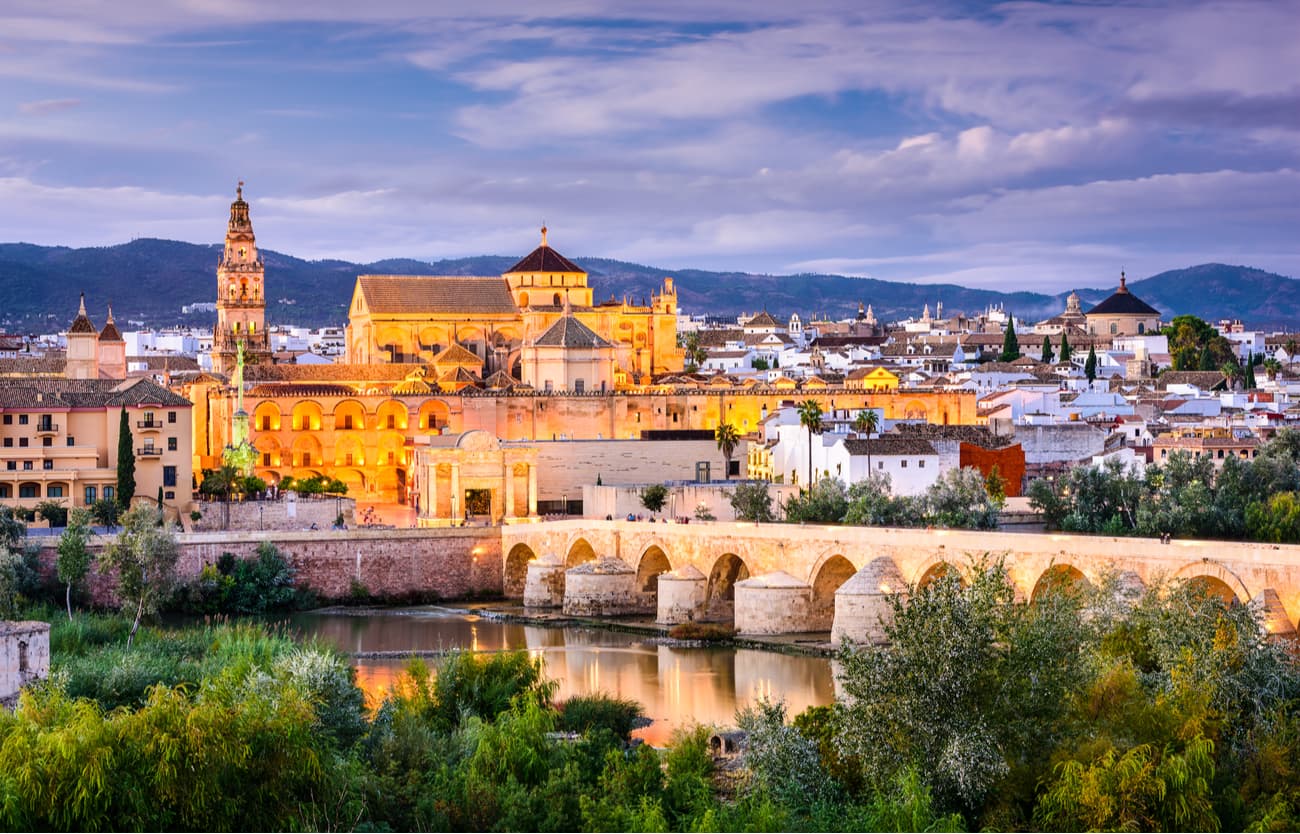
Córdoba has a busy train station with high-speed links to Madrid, Barcelona, Sevilla, and Málaga. Since the city doesn’t have a commercial airport, these train lines provide Córdoba with great access to the Costa del Sol, as well as the airports in Málaga and Sevilla.
The city of Jaén is the capital of the province of Jaén. Jaén city is home to over 113,000 people and is located to the northeast of Sierras Subbéticas Natural Park. Like Córdoba, Jaén does not have a commercial airport. However, it has 26 train lines that connect it to other major cities, such as Granada and Málaga, which offer good transport links around the country.

The capital city of the province of Granada, Granada is a sizable metropolitan area with over 230,000 inhabitants. The city of Granada is located to the southeast of Sierras Subbéticas Natural Park and is just a one hour drive from the city of Motril on the Costa del Sol. Granada even has an airport that services flights to the rest of Spain and southern Europe.

Known as the birthplace of famed artist, Pablo Picasso, the coastal city of Málaga is the capital of the province of Málaga. With over 570,000 residents, Málaga is the second-most populous city in the autonomous community of Andalusia, after Sevilla.
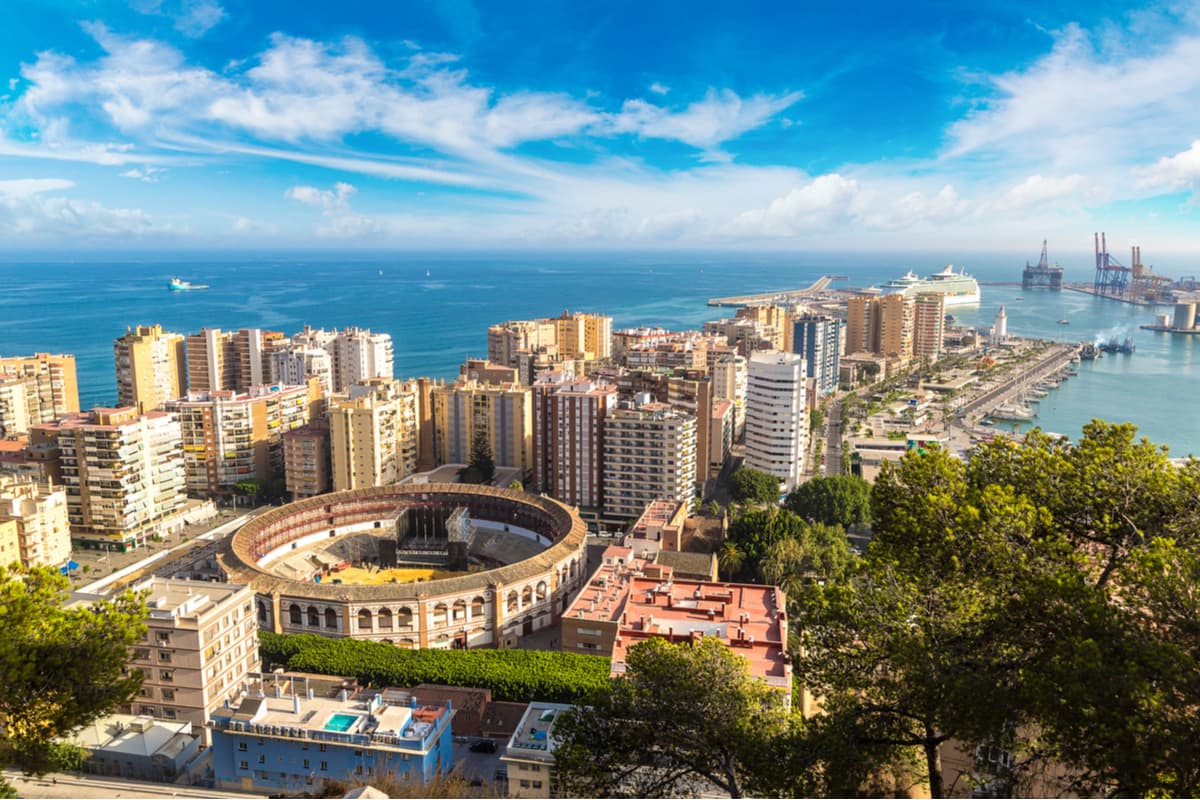
The city has good transport links around Spain and southern Europe, due to its busy airport. However, it also has a busy seaport that services passenger ferries to northern Africa, including Melilla. Additionally, Málaga has quite a few nice beaches and plenty of historic sights, so it’s a great place to stay either before or after your trip to Sierras Subbéticas Natural Park.
Explore Sierras Subbéticas Natural Park with the PeakVisor 3D Map and identify its summits.








